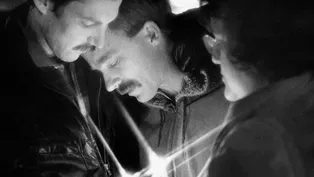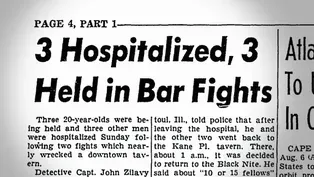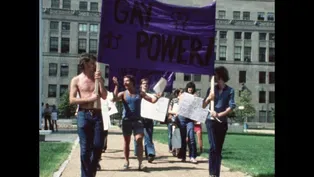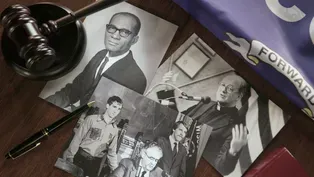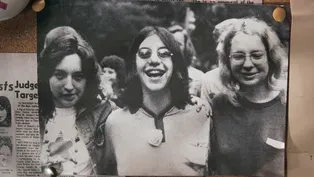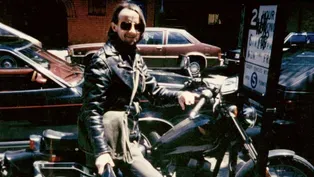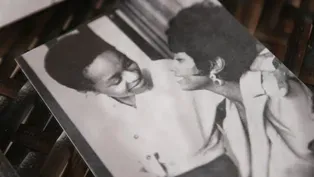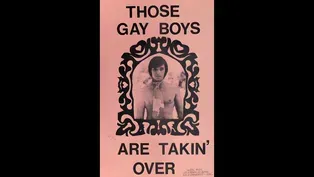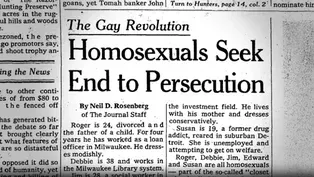Wisconsin Pride
Gay Press and Leaping La Crosse News
Clip: Special | 5m 27sVideo has Closed Captions
A diverse gay press united LGBTQ+ people. La Crosse had its own lesbian newsletter.
Long invisible and ignored by mainstream media, LGBTQ+ people took control of the narrative by publishing their own newspapers. Leaping La Crosse News took its name from a tongue-in-cheek song, “Leaping Lesbians.” From 1979 to 2007, it shared that kind of insider knowledge of the area's tight-knit lesbian cohort. It remains a great record for LGBTQ+ history outside of the state’s large towns.
Problems with Closed Captions? Closed Captioning Feedback
Problems with Closed Captions? Closed Captioning Feedback
Wisconsin Pride is a local public television program presented by PBS Wisconsin
Funding for Wisconsin Pride is provided by Park Bank, SC Johnson, the Greater Milwaukee Foundation, the Evjue Foundation, the charitable arm of the Capital Times, TruStage, the New Harvest Foundation,...
Wisconsin Pride
Gay Press and Leaping La Crosse News
Clip: Special | 5m 27sVideo has Closed Captions
Long invisible and ignored by mainstream media, LGBTQ+ people took control of the narrative by publishing their own newspapers. Leaping La Crosse News took its name from a tongue-in-cheek song, “Leaping Lesbians.” From 1979 to 2007, it shared that kind of insider knowledge of the area's tight-knit lesbian cohort. It remains a great record for LGBTQ+ history outside of the state’s large towns.
Problems with Closed Captions? Closed Captioning Feedback
How to Watch Wisconsin Pride
Wisconsin Pride is available to stream on pbs.org and the free PBS App, available on iPhone, Apple TV, Android TV, Android smartphones, Amazon Fire TV, Amazon Fire Tablet, Roku, Samsung Smart TV, and Vizio.
[poignant piano music] - Dick Wagner: In Wisconsin, you repeatedly had lesbian and gay publishers and editors who felt the need to have these gay publications here.
Gay Endeavor, Escape, In Step, Hag Rag, Wisconsin Light.
They were an important part of building community in this state.
- These publications often reflected and spoke to specific groups within the growing LGBTQ+ community.
- Kristen Whitson: "Bi" question mark, "Shy" question mark, "Why" question mark, as in "Why are you shy to be bi?"
It was an organization to recognize visibility and advocacy for bisexuals.
They published a newsletter called Bi-Lines.
- Dick Wagner: It had a little fun in its pages in that regard.
But again, it was an example of the need for an expression of the community and a physical manifestation of the community in a publication.
- Patrick Farabaugh: You needed something in community that could take care of and prioritize queer voices in a way that supported them, created space for them to explore their identity, and just educate them around cultural issues as basic as literally just finding each other.
[electronic pop music] - Dick Wagner: Leaping La Crosse News was a smaller newsletter that was published by the lesbian community in La Crosse.
It was published for decades in that area.
- The Leaping La Crosse News was established in 1979, and became an ongoing record of vibrant lesbian life outside of Wisconsin's larger cities.
- Mary O'Sullivan: It was the way a lot of women found us.
And they'd say, "Holy smoke!
I didn't know there were any lesbians in La Crosse."
They were just astonished that there could be anything happening in this little town of 50,000 people.
- The editor of the newsletter, Mary O'Sullivan, was a college instructor who grew up in a supportive family.
In La Crosse, she hoped to build that same support for other women.
- Mary O'Sullivan: Pretty soon, we had a thriving community of women who all knew each other and socialized.
- The Leaping La Crosse News opened a whole new world for fellow lesbians, revealing an underground culture that stretched well beyond the bar scene.
- Mary O'Sullivan: If you get lesbians together, the first thing they are going to do is organize potlucks and groups.
[chuckles] - The monthly newsletter connected the women with social events, ran news stories impacting the lesbian community, and even covered entertainment and sports.
- Mary O'Sullivan: Just being able to pick up an eight-page newsletter that talked about people like them and with like interests, that was a huge thing.
- In 1979, Mary O'Sullivan and some of her friends discovered that a local formal wear shop had been stockpiling discontinued tuxedos for years.
Inspiration soon struck!
- Mary O'Sullivan: We could buy these tuxes for like five bucks for the whole thing, and we could have a formal wear party.
- For some, it was the prom that never was.
For others, a great night out, akin to a costume party.
But for all, a celebration, a place of acceptance.
- Mary O'Sullivan: We weren't trying to be men or masculine.
We were just trying to question the every day and the accepted.
It was an outrageous thing to do.
But that was a really empowering kind of experience.
- The annual tux party continued for a decade, helping La Crosse to later be named the fifth best place in the U.S. for lesbians to live, according to Girlfriends magazine in 2002.
The tight-knit group in the small Wisconsin community had created a place all their own.
And for some women, we were their family because they got kicked out.
The world wasn't all that safe then.
- Kristen Whitson: Queer people often feel more comfortable with other queer people.
They didn't have to worry about being bullied or harassed.
They know that their experiences are not singular, that they are not alone.
- Often closeted, people all across Wisconsin were finding each other.
Connecting in a world that had marginalized them.
Persevering in building meaningful and enriching lives.
- Mary O'Sullivan: We had a real world, too.
Video has Closed Captions
Clip: Special | 5m 57s | Responding to the AIDS pandemic took political will and new social action led by ACT-UP. (5m 57s)
Video has Closed Captions
Clip: Special | 2m 9s | Gay bars once were the only place you could be gay, and it was still risky. (2m 9s)
Video has Closed Captions
Clip: Special | 4m 46s | Years before Stonewall, a Milwaukee bar’s patrons fought back against homophobic attacks. (4m 46s)
Video has Closed Captions
Clip: Special | 2m 19s | Gay Peoples Union nurtured LGBTQ+ life in 1970s Milwaukee. (2m 19s)
Video has Closed Captions
Clip: Special | 11m 6s | Wisconsin led the nation in enacting anti-discrimination laws for gays and lesbians. (11m 6s)
Video has Closed Captions
Clip: Special | 5m 2s | The nation’s first out lesbian candidate for office ran to protest anti-LGB school policy. (5m 2s)
Video has Closed Captions
Clip: Special | 4m 58s | A trans-pioneer from Wauwatosa, WI, Lou Sullivan helped others to live as themselves. (4m 58s)
Video has Closed Captions
Clip: Special | 5m 25s | Milwaukee lesbian couple sought marriage equality in the Seventies. (5m 25s)
Video has Closed Captions
Clip: Special | 2m 37s | The Madison Alliance for Homosexual Equality was Wisconsin’s first LGBTQ+ advocacy group. (2m 37s)
Preview: Special | 30s | Remarkable stories of fighting injustice define a pivotal LGBTQ+ era in Wisconsin. (30s)
Providing Support for PBS.org
Learn Moreabout PBS online sponsorshipSupport for PBS provided by:
Wisconsin Pride is a local public television program presented by PBS Wisconsin
Funding for Wisconsin Pride is provided by Park Bank, SC Johnson, the Greater Milwaukee Foundation, the Evjue Foundation, the charitable arm of the Capital Times, TruStage, the New Harvest Foundation,...
